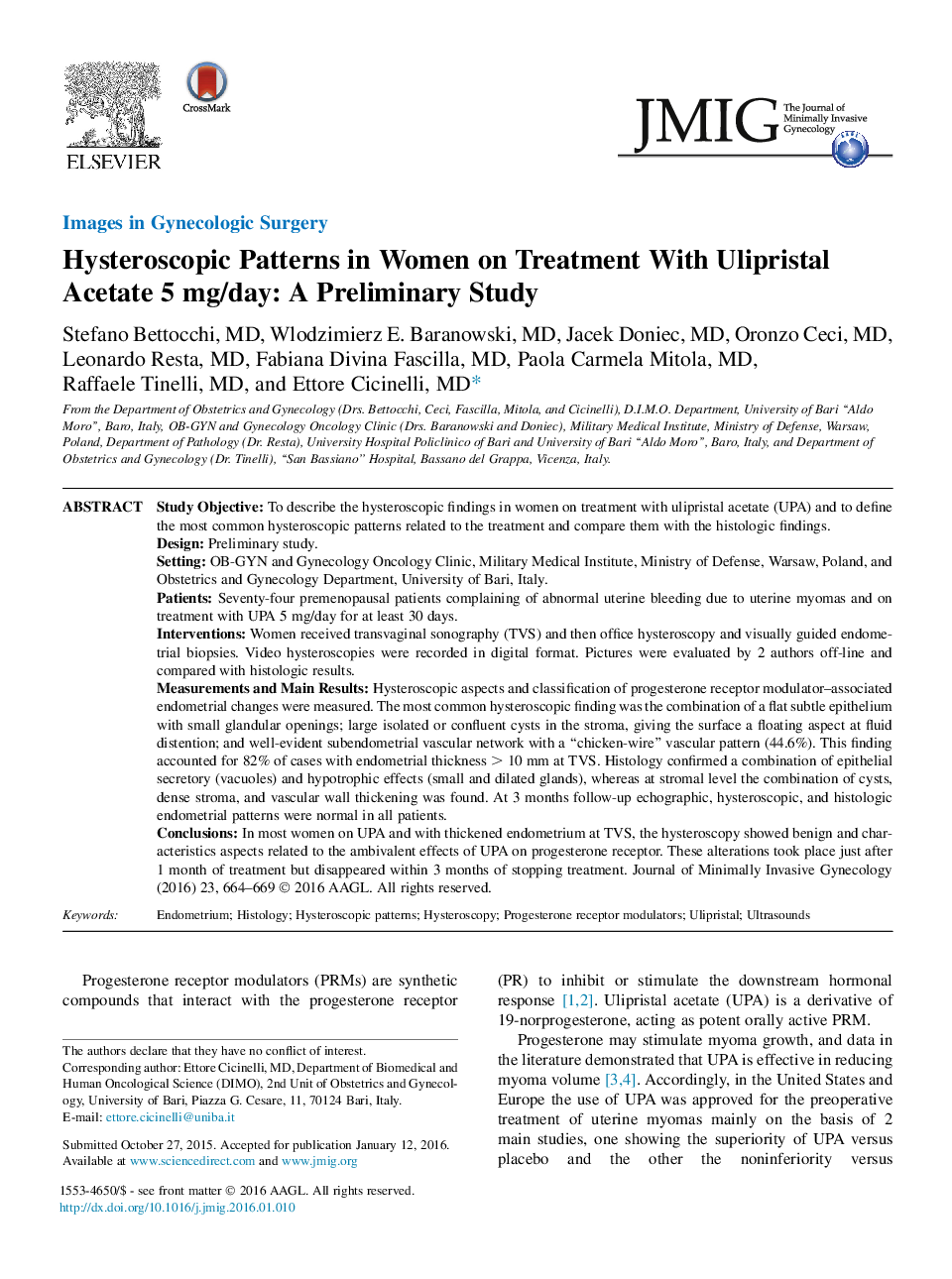| کد مقاله | کد نشریه | سال انتشار | مقاله انگلیسی | نسخه تمام متن |
|---|---|---|---|---|
| 3961564 | 1255613 | 2016 | 6 صفحه PDF | دانلود رایگان |

Study ObjectiveTo describe the hysteroscopic findings in women on treatment with ulipristal acetate (UPA) and to define the most common hysteroscopic patterns related to the treatment and compare them with the histologic findings.DesignPreliminary study.SettingOB-GYN and Gynecology Oncology Clinic, Military Medical Institute, Ministry of Defense, Warsaw, Poland, and Obstetrics and Gynecology Department, University of Bari, Italy.PatientsSeventy-four premenopausal patients complaining of abnormal uterine bleeding due to uterine myomas and on treatment with UPA 5 mg/day for at least 30 days.InterventionsWomen received transvaginal sonography (TVS) and then office hysteroscopy and visually guided endometrial biopsies. Video hysteroscopies were recorded in digital format. Pictures were evaluated by 2 authors off-line and compared with histologic results.Measurements and Main ResultsHysteroscopic aspects and classification of progesterone receptor modulator–associated endometrial changes were measured. The most common hysteroscopic finding was the combination of a flat subtle epithelium with small glandular openings; large isolated or confluent cysts in the stroma, giving the surface a floating aspect at fluid distention; and well-evident subendometrial vascular network with a “chicken-wire” vascular pattern (44.6%). This finding accounted for 82% of cases with endometrial thickness > 10 mm at TVS. Histology confirmed a combination of epithelial secretory (vacuoles) and hypotrophic effects (small and dilated glands), whereas at stromal level the combination of cysts, dense stroma, and vascular wall thickening was found. At 3 months follow-up echographic, hysteroscopic, and histologic endometrial patterns were normal in all patients.ConclusionsIn most women on UPA and with thickened endometrium at TVS, the hysteroscopy showed benign and characteristics aspects related to the ambivalent effects of UPA on progesterone receptor. These alterations took place just after 1 month of treatment but disappeared within 3 months of stopping treatment.
Journal: Journal of Minimally Invasive Gynecology - Volume 23, Issue 5, July–August 2016, Pages 664–669